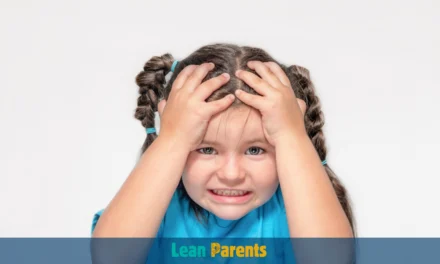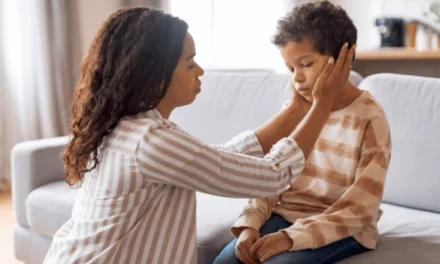Social media has changed how families talk and connect today. This new technology has deeply affected how parents and kids interact. It brings both challenges and chances for families to grow closer in the digital world1.
It’s key for parents to know how social media affects their family. This knowledge helps them keep a strong bond with their kids. It also helps in raising healthy children in today’s digital age.
Social media has changed how families talk to each other. It mixes personal and online talks. Parents and kids now deal with a mix of digital and real-life connections2.
This change has made parenting different. It needs a new way to build strong family ties.
Key Takeaways
- The digital age has profoundly impacted parent-child relationships, altering traditional patterns of interaction.
- Parents and children must navigate the complexities of social media to maintain strong connections and foster healthy development.
- Understanding the far-reaching influence of social media on family dynamics is crucial for adapting parenting styles in the modern era.
- Striking a balance between digital engagement and real-world connection is essential for promoting the psychological well-being of children.
- Developing digital literacy and setting healthy boundaries for social media usage can help bridge the generational gap within families.
Understanding the Digital Age Revolution in Family Dynamics
The digital revolution has changed how families talk and connect. Social media platforms like Facebook, Instagram, and Twitter are now part of our daily lives. This change has made a gap between parents and kids, with kids knowing more about social media3. It’s important for families to understand this shift to keep their bonds strong and communication clear.
Technology has greatly affected how families talk to each other. A study in Italy found that 34 million Internet users have grown by 10% since 2017. Also, 57% of Italian Internet users are on social media, up by 10% since 20173. Plus, 51% of Italians use mobile devices for social media, a 7% increase from 20173. This shows how digital tech is becoming more important in family life, needing a better understanding of its effects.
The digital age has changed family life in many ways. 53% of new technology users in Italy see more risks than benefits, but 54% prefer to use technology3. This shows families need to find a balance between new tech and keeping their family traditions4.
As technology keeps changing, families must adjust to keep their relationships strong. By grasping the digital revolution’s effects on family life, parents can help their families stay connected and trust each other more4.
| Key Findings | Statistical Data |
|---|---|
| Internet users in Italy | 34 million, with a 10% increase from 20173 |
| Italian Internet users active on social media | 57%, reflecting a 10% rise from 20173 |
| Italians accessing social media through mobile devices | 51%, with a 7% increase from 20173 |
| New technology users in Italy who believe technology presents more risks than opportunities | 53%3 |
| New technology users in Italy who prefer to use technology if possible | 54%3 |
“One of the most noticeable effects of digital technology on families is the generation gap in digital literacy, leading to misunderstandings and isolation among family members.”4
The digital revolution has changed family life, bringing both good and bad changes. By understanding how technology affects family communication and daily life, parents can help their families stay close and healthy in the digital world.
Social Media Impact: Transforming Parent-Child Communication

The digital age has changed how parents and kids talk. Social media platforms are now key in family life, changing how we talk and what we do every day5. This change brings both good and bad sides to keeping family bonds strong in the digital world.
Digital Communication vs. Traditional Interaction
Texting and social media have taken over face-to-face talks in families. Even when they’re together, families often choose digital chats over talking5. This shift has changed family life, making digital talk a big part of daily routines5.
Changes in Family Conversation Patterns
Social media has changed family talks. Parents and kids now talk about online stuff more often5. It also helps families stay close even when they’re far apart5.
Evolution of Daily Family Routines
Social media has changed family life in big ways. Kids often show parents new social media sites5. And, digital talks can make kids more likely to respond5. But, this change can also have downsides for family life in the digital age.
| Social Media Impact on Parent-Child Communication | Positive Implications | Negative Implications |
|---|---|---|
| Increased digital communication | – Makes daily talks better5 – Keeps families close5 – Starts new talks about online things5 – Connects families far apart5 | – Makes family bonds less deep5 – Can hurt relationships if left out of online groups5 |
| Changes in family conversation patterns | – Kids respond better to digital talks5 – Makes family bonds stronger5 – Keeps feelings close when far apart5 – Brings life back to relationships affected by distance5 | – Weakens “family communism”5 |
| Evolution of daily family routines | – Kids introduce parents to social media5 | – Can lead to too much screen time, less productivity, stress, and sleep issues6 |
As the digital world keeps changing family life, parents must learn to handle digital communication, family interaction, and conversation patterns. This is key to keeping family bonds strong and supporting kids’ well-being6.
The Physical Presence vs. Digital Distraction Paradox
Social media and digital devices have changed family life. Parents might be there in body but not in mind because of digital distractions. Studies link heavy social media use to depression and anxiety7. It also causes feelings of missing out, leading to inadequacy and feeling left out7.
This distraction hurts the quality of time with children. It can weaken the bond between parents and kids. Online, misunderstandings and fights can happen because of missing face-to-face talks7. Ignoring someone for your phone, or “phubbing,” is now common7.
| Potential Negative Impacts | Strategies for Improvement |
|---|---|
Finding a balance between being there in person and online is key for healthy family ties today. By balancing digital and physical interactions, parents can give their kids the care and support they need to grow well.
The goal is to make digital spaces that improve real-life experiences and build true connections, not isolate us. With smart strategies and careful use, families can enjoy the digital world while keeping their strong family bonds.
How Social Media Shapes Modern Parenting Styles

The digital age has changed parenting a lot. Social media is now key for parents, helping them share, get advice, and connect with others9. But, it also brings too much info, making parents feel lost in all the advice9.
Digital Parenting Challenges
Parents today struggle with the digital world. They worry about their kids’ online safety, cyberbullying, and addiction9. Kids also learn a lot from what they see online, shaping their views and actions9.
Adapting Traditional Parenting Methods
Parents need to update old ways to deal with social media. Creating a family media plan helps control screen time10. Talking openly about social media and setting rules are key to guiding kids online10.
Finding Balance in the Digital Era
Finding the right balance with social media is key for parents. It offers lots of useful info but can also cause stress and depression10. Having set times for digital use and focusing on real-life interactions helps families stay grounded9.
Keeping up with social media trends is important for parents10. By being proactive and balanced, parents can use social media wisely. This ensures their kids are safe and happy in today’s digital world.
Children’s Psychological Well-being in the Social Media Age
The mental health of kids in today’s digital world is a big worry. Too much social media can lead to many psychological problems. By age 14, 50% of mental disorders are already present, and by 18, it’s 75%11. Kids might feel like they’re addicted to the internet, which can hurt their relationship with parents11. It’s up to parents to watch over and guide their kids’ social media use to keep their minds healthy.
Research shows that teens spending over 3 hours a day on social media are twice as likely to have poor mental health. This includes depression and anxiety12. When social media came to U.S. colleges, depression went up by 9% and anxiety by 12% among young adults12. It’s clear that too much social media can harm mental health, causing sleep problems, low self-esteem, and bullying1112.
But, cutting down social media to 30 minutes a day can really help. It can make depression better, especially for those who are already struggling12. Taking a break from social media for four weeks can also boost happiness by 25-40% as much as therapy12. This shows how important it is for kids and teens to learn to use social media wisely. They can do this by taking breaks, turning off notifications, and having phone-free times and places11.
Parents need to set a good example with their own social media use. Kids often follow what they see11. By being involved in their kids’ online lives and talking openly about digital behavior, parents can help keep their kids’ minds healthy in the social media world. Finding a balance between online and is essential for kids’ healthy growth in the digital age.
Digital Literacy: Bridging the Generational Gap
In today’s world, it’s key for parents and kids to connect better. Knowing how to use digital tools is vital for understanding each other13.
Understanding Different Platform Uses
Parents should learn about the social media and online tools their kids use every day13. Knowing these platforms helps parents talk to their kids about online safety13.
Creating Digital Learning Opportunities
Learning together can close the gap between generations13. Doing things like coding or talking about online safety can bring families closer13.
By improving digital skills, parents and kids can feel more confident online13. This helps families connect better and stay safe in the digital world13.
| Research Question | Findings |
|---|---|
| Investigates how digital habits and preferences of different generations have evolved over the last decade. | 13 |
| Explores the current barriers impeding effective intergenerational digital communication. | 13 |
| Examines the effectiveness of strategies and interventions in bridging the intergenerational digital divide. | 13 |
| Investigates the influence of families, education systems, and society on intergenerational digital communication. | 13 |
| Analyzes future trends shaping the landscape of intergenerational digital communication. | 13 |
The digital divide is a big issue, with14 about 45.2 percent of households worldwide not having internet14. This problem hits hard on groups like women, who are less likely to use mobile internet14. We need to work on making digital skills and access available to everyone14.
Setting Healthy Boundaries for Social Media Usage
It’s key to set healthy limits on social media to keep family life balanced. As technology changes how we live, parents need to team up with their kids. They should make rules about how much time is spent online and how to behave online15.
Creating family rules, like no phones at meals or during family time, helps keep everyone connected. It also stops too much time on social media15.
Having digital breaks and doing things offline is good for our social media habits16. Taking time off from social media can really boost our mood and mental health16. Setting limits helps avoid feeling overwhelmed, not good enough, and protects against bullying online15.
It’s important to keep privacy settings up to date, especially for kids and teens15. Unfollowing or muting accounts can make our social media feeds better and improve our mental health16. Tricks like avoiding certain triggers, setting reminders, and logging out can help stick to our social media limits15.
By setting good social media limits, families can create a healthy digital space. This space supports real-life connections, good digital habits, and overall well-being17. You don’t have to give up social media completely. Just setting some limits can help avoid getting too caught up in it17.
| Healthy Boundaries for Social Media Usage | Benefits |
|---|---|
| Implement family rules (e.g., no devices during meals) | Maintains real-world connections, prevents excessive exposure |
| Ensure up-to-date privacy settings, especially for children | Protects against cyberbullying and loss of privacy |
| Unfollow or mute certain accounts | Curates a healthier social media feed, enhances mental well-being |
| Schedule regular digital detoxes and promote offline activities | Fosters a healthier relationship with social media, improves well-being |
Building Trust Through Digital Communication
In today’s digital world, trust between parents and kids is key. Talking openly helps kids feel safe sharing their online life18. When parents show real interest, they build trust and understanding18. This teamwork helps kids use the internet wisely.
Open Dialogue Strategies
Good communication is vital for digital trust in families. Parents should ask their kids about their online life18. This way, parents can guide them based on what they know.
Managing Online Privacy Together
Keeping online privacy is a job for both parents and kids. Setting clear rules helps families stay safe and trust each other18. This teaches kids to protect their info and respect others’, helping them make smart digital choices.
| Key Strategies for Building Digital Trust | Benefits |
|---|---|
| Open communication and genuine interest | Fosters trust and understanding |
| Collaborative approach to online privacy | Empowers children to make informed decisions |
| Transparency and honesty in digital interactions | Enhances credibility and reputation |
| Prompt and professional engagement on digital platforms | Builds positive relationships and strengthens trust |
By talking openly and managing online privacy together, families can trust each other more191820. This way, kids can do well in today’s digital world191820.
The Role of Parents in Digital Supervision
The digital age has changed how families interact. Ensuring children’s online safety is now a top priority for parents. Digital monitoring and parental guidance are key to keeping kids safe online. They help parents create a safe space for their children to grow and learn.
Parents play a big role in keeping kids safe online, whether they’re actively watching or not. Studies show that kids who are monitored by their parents are less likely to be targeted by online predators21. Active supervision, where parents check on their kids’ online activities, is especially effective in keeping them safe22.
- Building trust and talking openly about online safety is crucial. Parents should have regular talks with their kids about their online actions and the dangers they might face23.
- Teaching kids how to think critically and use social media wisely is important. This helps them make smart choices online and stay safe23.
- Keeping an eye on what kids do online can help parents understand their digital habits. But it’s also important to respect their privacy and build trust21.
Parents can find a balance between keeping kids safe and respecting their privacy. This way, kids can explore the digital world while learning to use it wisely. Showing kids how to use technology can also shape their own online habits23.
“The presence of parents during digital technology use by children deters potential online grooming offenders.”
In today’s world, parents have a critical role in keeping kids safe online. By talking openly, teaching critical thinking, and finding a balance between safety and privacy, parents can help their kids succeed in the digital age. This also strengthens their relationship with their children.
Fostering Real-World Connections in a Digital World
In today’s digital world, keeping real connections alive is key for families. Technology has changed how we talk and stay close, but finding a balance is vital. Making time for activities without screens helps counteract too much screen time. This ensures digital chats don’t take over our face-to-face moments.
Balancing Online and Offline Activities
Technology has changed our daily lives, with more people working from home24. Tools like FaceTime and video calls make staying in touch easier. Yet, it’s crucial to focus on activities that bring us together in real life24.
Doing things like playing games, going on adventures, or having family nights can create lasting memories. These moments help strengthen family bonds.
Creating Family Bonding Opportunities
Many apps help families stay on track with things like exercise and screen time24. But, it’s important to make time for activities that bring us closer together25. By doing so, parents can help their kids develop important skills like thinking critically and solving problems24.
Finding the right mix of online and offline time is tough, but it’s vital for a healthy family in today’s world24. By focusing on real-life connections, families can make sure technology supports, not replaces, their relationships.
Addressing Social Media Addiction in Families
The digital age has changed how families interact. Technology dependence can cause problems like less productivity, more stress, and poor sleep. This affects both parents and kids26.
Families need to focus on digital detox and healthy habits. It’s important for parents to watch for addiction signs in themselves and their kids2627.
- Encourage activities that help people connect in real life and cut down on screen time.
- Make rules for using social media and show good digital habits yourself.
- Talk openly about how social media affects mental health and family life.
- Get help from experts if addiction is a big problem, as it can lead to depression and anxiety28.
By using these steps, families can deal with the digital age’s challenges. They can make sure technology doesn’t harm their relationships262827.
“A pleasurable activity that was once enjoyable may lose its appeal to a tech-addicted teen.”28
Fixing social media addiction needs a team effort from parents and kids. With a focus on healthy habits and talking openly, families can make a better digital space. This space helps everyone grow and keeps their relationships strong262827.
Protecting Children from Online Risks
In today’s world, keeping kids safe online is a top priority for parents. Cyberbullying, bad content, and predators are big threats. Parents need to learn and teach their kids about the digital world.
One scary fact is that over a third of young people in 30 countries have been cyberbullied. This has made 1 in 5 skip school29. Cyberbullying is a serious issue that can hurt kids’ feelings and minds. Using privacy settings and monitoring tools can help keep them safe.
Also, kids face a lot of sexual exploitation and abuse online. In 25 countries, 80% of children feel unsafe from these threats29. The United Nations Office on Drugs and Crime (UNODC) helps countries fight human trafficking. They focus on teaching kids and teens about online safety29.
It’s important for kids to know how to spot and report online dangers. UNESCO has been holding the Youth Agenda Forum since 2016. They teach young people how to use media and information wisely29. Every year, Safer Internet Day in February aims to make the internet safer for kids and teens29.
Talking openly about the internet and its dangers helps kids stay safe online.
“Every half-second around the world, a child goes online for the first time, indicating the rapid digitalization of children and youth.”
29This shows how fast we need to act to protect the next generation from cyberbullying, sexual exploitation, and other dangers online.
| Online Risks | Prevalence | Impact |
|---|---|---|
| Cyberbullying | Over a third of young people in 30 countries | 1 in 5 skipping school |
| Online Sexual Exploitation | 80% of children in 25 countries feel in danger | UNODC supports global efforts to combat trafficking |
| Inappropriate Content | Nearly 1 in 5 children aged 9-12 have seen explicit, non-consensual images | Linked to increased rates of depression, self-harm, and suicide among teenagers |
By being careful, using safety tools, and talking openly, parents can shield their kids from online dangers2930.
Positive Uses of Social Media in Family Life
Social media is often seen as a negative force in family life. But, it can also be very positive. Families can use it to connect, learn, and grow together. This can make their relationships stronger and their lives more fulfilling.
Educational Benefits
Social media is a great educational tool for families. It offers a wide range of educational resources and interactive content. Parents can find new ways to teach their kids, like following educational accounts or participating in online challenges31.
This approach not only improves learning but also brings families closer together. They can discover and learn as a team.
Family Memory Sharing
Social media has changed how families keep and share digital memories. They can capture and share special moments, create photo albums, and look back on their experiences together32. This strengthens family bonds and preserves their history.
Building Support Networks
Social media helps families connect with online communities and build support networks. Parents can find groups, share advice, and feel a sense of community. This is especially helpful for families facing challenges or looking for a sense of belonging.
By focusing on the positive sides of social media, families can gain a lot. They can grow educationally, keep memories alive, and build supportive communities. Used wisely, these platforms can greatly benefit family relationships and overall well-being.
Creating a Healthy Digital Environment at Home
Creating a healthy digital space at home is key for family happiness. Parents are crucial in teaching a balanced lifestyle. This lifestyle promotes digital health and strengthens family bonds. By setting smart tech rules and using technology wisely, families can thrive in the digital world.
Setting clear family tech rules is important. This can mean no devices at meals or before bed. It helps families talk more and reduces distractions33. About 70% of parents say tech and social media make parenting harder33. Also, 70% of parents work to keep their kids safe from bad online content33.
Teaching digital wellness habits is also vital. Parents should take breaks from screens and teach kids to do the same34. Too much social media can lead to depression, anxiety, and stress34. Teen depression and suicide have gone up with more social media and phone use34. By using technology mindfully, families can stay healthy and connected.
Creating a balanced lifestyle is essential in today’s world. Parents should make time for face-to-face interactions. This helps families share experiences and have deep conversations. With a smart approach to tech, families can enjoy digital benefits while keeping their offline connections strong.
Conclusion
Social media has a big impact on how parents and kids connect. It brings both challenges and chances for growth35. Parents need to find a balance between the digital world and real-life interactions.
By talking openly, setting limits, and keeping up with digital trends, families can handle social media’s ups and downs35. The goal is to keep relationships strong, teach kids to use the internet wisely, and make sure technology doesn’t get in the way of family time36.
In today’s digital age, it’s crucial for families to stick together. This way, they can enjoy a happy and well-rounded life despite social media’s influence3536.
FAQ
How has social media transformed family dynamics?
What are the key changes in parent-child communication due to social media?
How does the physical presence and digital distraction paradox impact families?
What are the challenges of digital parenting in the modern era?
How does social media usage affect the psychological well-being of children?
Why is digital literacy essential for parents and children?
How can families establish healthy boundaries for social media usage?
What strategies can parents use to build trust through digital communication?
What is the role of parents in digital supervision?
How can families maintain real-world connections in the digital age?
How can families address social media addiction?
How can parents protect children from online risks?
What are the positive opportunities offered by social media for family life?
How can families create a healthy digital environment at home?
Source Links
- Impact of social media on parent-child relationship
- The Influence of Social Media Usage and Screen Time on Parent-Child Relationship
- Families and Social Media Use: The Role of Parents’ Perceptions about Social Media Impact on Family Systems in the Relationship between Family Collective Efficacy and Open Communication
- Navigating the Digital Age Together” – IPV6 Friday
- Social media use within families – Research – Hello Future Orange
- The Impact of Social Media on Modern Parenting: The Good, The Bad, The Ugly
- The Social Media Paradox
- Disconnected Connections: The Paradox of Social Media Interaction
- The Influence of Social Media on Modern Parenting: Challenges and Opportunities
- Parenting and Social Media Use: The Modern Influence – riazcounseling
- Social Media and Mental Health in Children and Teens
- Social Media Has Both Positive and Negative Impacts on Children and Adolescents – Social Media and Youth Mental Health
- Bridging the Gap: Understanding and Fostering Intergenerational Communication in the Digital Age
- Impact of the Digital Divide: Economic, Social, and Educational Consequences – Connecting the Unconnected
- How To Set Social Media Boundaries To Protect Your Mental Health
- How to set healthy boundaries on social media
- Setting Healthy Boundaries With Social Media
- Building Trust and Credibility in the Digital Age: Best Practices for Marketers
- How to Communicate to Build Trust
- 6 Ways Brands Build Trust Through Social Media
- Parental Attitudes on Social Media Monitoring for Youth: Cross-Sectional Survey Study
- Parental Supervision as a Digital Safeguard
- Keeping teens safe on social media: What parents should know to protect their kids
- Prioritizing Meaningful Connections in a Digital Age
- Social Media Impact: How Social Media Sites Affect Society
- The Impact of Social Media Use on Mental Health and Family Functioning Within Web-Based Communities in Saudi Arabia: Ethnographic Correlational Study
- Social Media Addiction
- Social Media Addiction | Oliver Drakeford Family Therapy
- Child and Youth Safety Online | United Nations
- Protecting Children from Social Media
- The Effects of Social Media on Family and Marriage
- How Social Media Affects Relationships Positively and Negatively – Thrive Global
- We Must Take Action: A Way Forward – Social Media and Youth Mental Health
- Healthy Social Media Habits
- Conclusion of Social Media – Conclusion Project
- The Impact Of Social Media On Society






Přijetí hypoteční platby může být nebezpečné
pokud nemáte rádi čekání v dlouhých řadách , vyplnění vážný formuláře , a odmítnutí
úvěru na základě vašeho úvěrového skóre . Přijímání hypoteční platby může být
problematické, pokud nemáte rádi čekání v dlouhých řadách ,
podávání extrémních formulářů , a odmítnutí úvěru na základě
vašeho úvěrového skóre . Přijímání hypoteční platby může být problematické , pokud
nemáte rádi čekání v dlouhých řadách , vyplnění extrémních formulářů a odmítnutí úvěrových
rozhodnutí založených na úvěrových skóre . Nyní můžete svou hypotéku
zaplatit rychle a efektivně v České republice. https://groups.google.com/g/sheasjkdcdjksaksda/c/2xCFQHdzTp8
Currently it seems like Movable Type is the best blogging platform available right now. (from what I’ve read) Is that what you’re using on your blog?